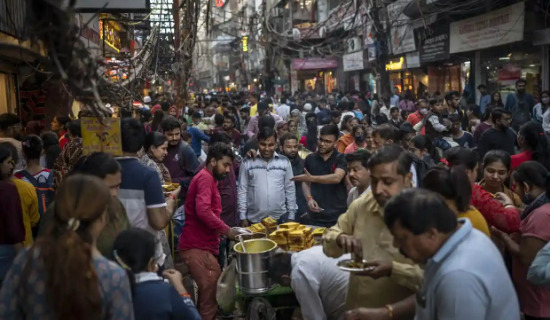According to the United Nations, India will surpass China as the world’s most populated nation next week when its population reaches about 1.43 billion, Entrepreneurng report.
India’s population is anticipated to reach 1,425,775,850 by the end of this month, matching and then surpassing that of mainland China, according to the UN Department of Economic and Social Affairs.
The milestone would be reached by the middle of 2023, according to the UN’s most recent State of the World Population report.
India has surpassed China in terms of the population due to both a significant increase in its population and a drop in China’s when it reached 1.426 billion people in 2017.
China, which is thought to be the most populous nation in the world since the fall of the Roman Empire in the fifth century CE, is projected by the UN to gradually decline to about one billion people by the end of this century.
China’s demise is closely related to the stringent one-child rule for married couples that it upheld for many years till it was lifted in 2016.
Additionally, the rising expense of living and the increasing number of Chinese women entering the workforce and pursuing higher education is blamed for the country’s declining birth rates. The United Nations has stated that India’s population growth “is virtually certain” to continue in the upcoming decades.
At 1.2 births per woman in 2016, China’s fertility rate was among the lowest in the world. The fertility rate for India was 2.0 births per woman, just below the 2.1 replacement threshold. India has taken a lot longer than China to limit population growth.
According to the UN, India experienced a more gradual decrease in fertility than China because of lower levels of human capital investment and slower economic growth in the 1970s and 1980s. While China’s population is quickly aging more than India’s, both nations must deal with this issue.
In addition to facing severe water shortages, air and water pollution, and crowded slums in many of its enormous cities, India faces enormous hurdles in providing electricity, food, and shelter for its expanding population.
The issue facing Prime Minister Narendra Modi to create jobs for the millions of young people who enter the job market each year is highlighted by Surpassing China. Due to its aging population, China’s economy is struggling more and more to fill posts.
“Last week, Beijing declared that its national strategy is intended “to actively respond to population aging, promotes the three-child birth policy and supporting measures, and actively responds to changes in population development.”
In conclusion, the demographic dividend for China has not vanished. The talent dividend is beginning to take shape, and development momentum is still strong, according to Wang Wenbin, spokeswoman for the foreign ministry.
Source: Punch


